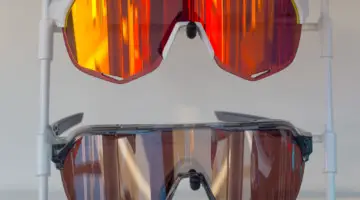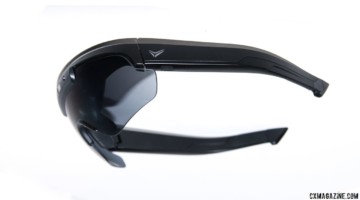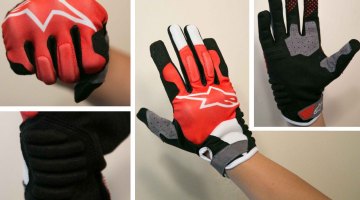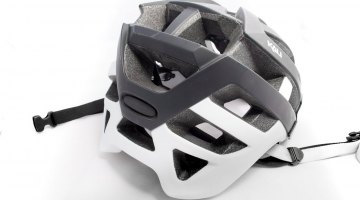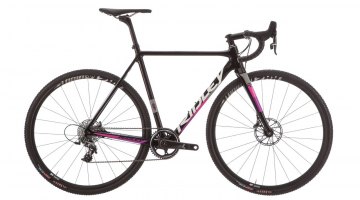Made for Cyclists, Not Golfers, Surfers or Drivers
Because Ryders is focused on cycling, it prioritizes cycling-specific features. Helmet compatibility is important, with temples that don’t interfere with most helmets’ straps and cradles.
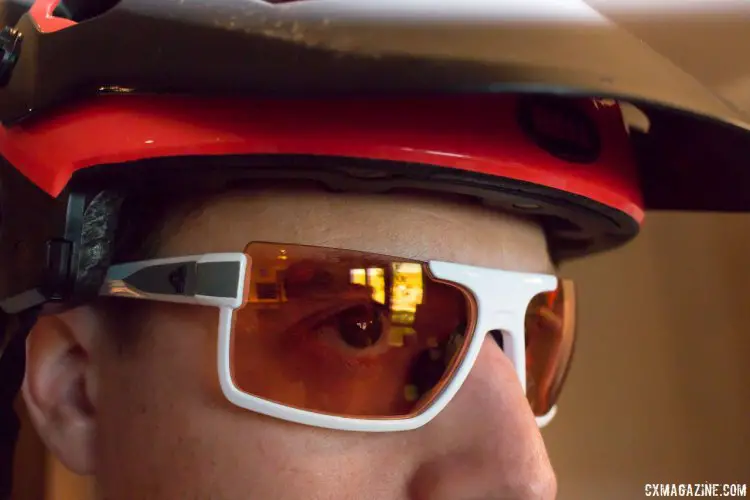
Ryders Eyewear’s Yellow/Brown Fyre lenses on an Invert frame. Press Camp 2016. © Cyclocross Magazine
Some Ryders frames also adopt what the company calls INVERT, which moves the frame from the top of the lens to the bottom. This change is motivated by two benefits: increasing air flow up top to reduce fogging, and to protect the cheeks from lens cuts in case of impact. Ryders says cuts from the bottom of frameless glasses are more of a risk than the top of glasses during crashes, as helmet impacts often push glasses down on your face.
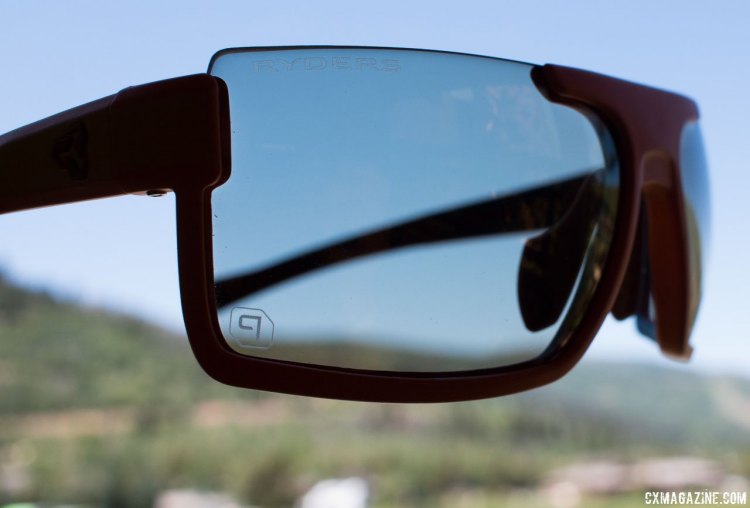
Ryders Eyewear has found that removing the upper frame helps prevent fog, while the lower frame protects against cheek cuts in a crash. Press Camp 2016. © Cyclocross Magazine
Speaking of crashes, Ryders boasts both lens impact resistance and frame flexibility to help ensure you’re only picking up the pieces of your ego after a spill.
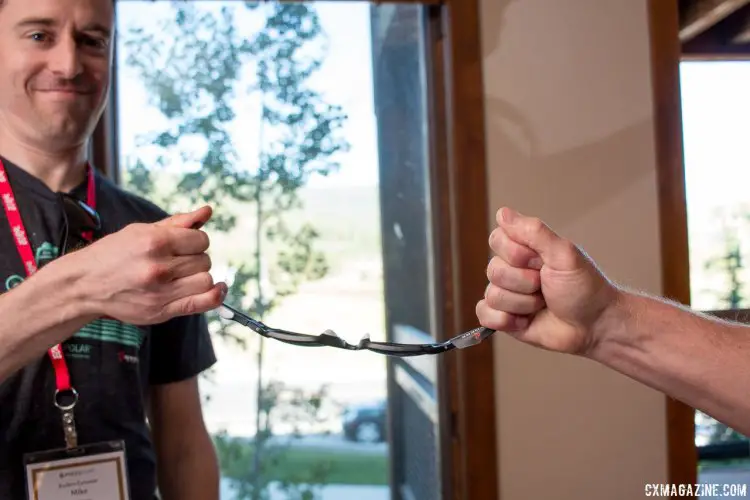
Spend your hard-earned cash on some shades and you want them to last. Ryders Eyewear demonstrates the strength and flexibility of its frames and lenss. Press Camp 2016. © Cyclocross Magazine
Lastly, Ryders offers polarized options that are aimed at cyclists, not fishermen or watermen. Polarized lenses for cyclists? Isn’t that a no-no, because we need to see wet, slippery spots? Ryders disagrees, and offers its veloPOLAR polarized glasses ($139 and up) especially for road cyclists.
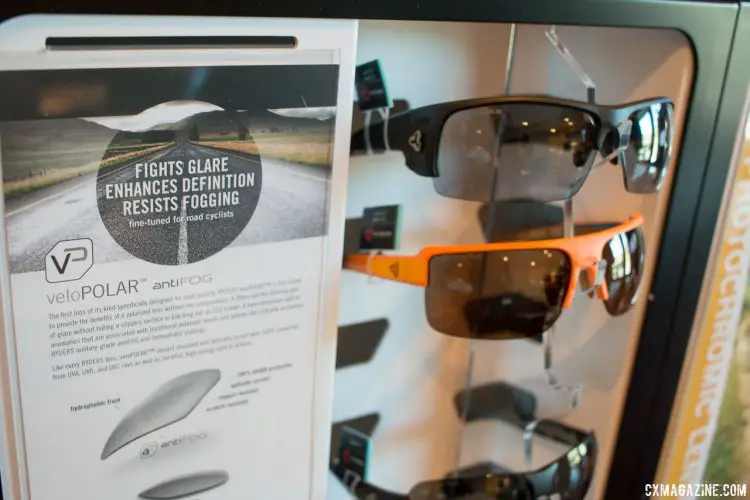
Now you can ride your bike on wet roads, read your GPS and fish finder, and then have tight lines thanks to Ryders Eyewear’s veloPOLAR 70% polarized lenses. Press Camp 2016. © Cyclocross Magazine
The 70% polarized lenses cut through the majority of glare, offering good sunny day contrast, while still showing wet areas on the road. A side benefit is that the veloPOLAR treatment still allows you to track your ride info on your LCD screen device.
For the dirt and mixed terrain crowd, the company offers a photoPOLAR photochromic semi-polarized lens that cuts glare but keeps you seeing the trail in bright and sunny conditions.




























